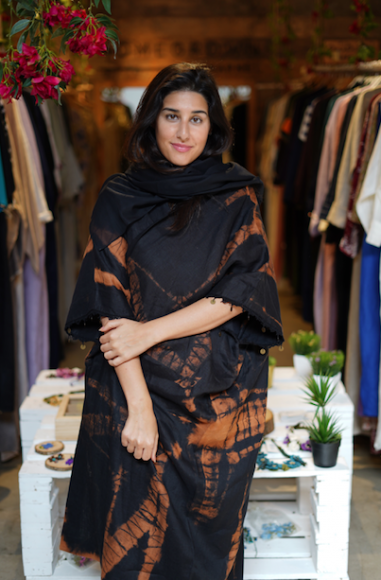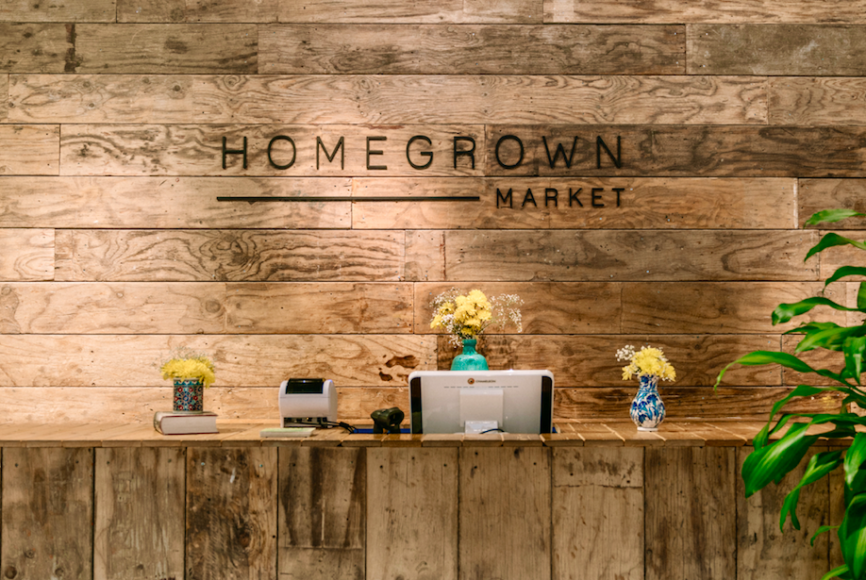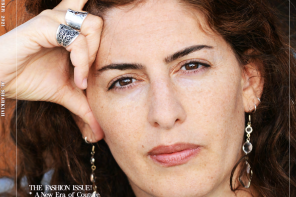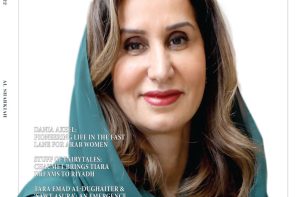Tamara Abukhadra is a fashion enthusiast and a Saudi entrepreneur who adapted the idea of a concept store and online-retailer to the Kingdom of Saudi Arabia.
Al Sharkiah sat down with Abukhadra to learn more about how Homegrown Market has become the go-to-shop for the latest designs and hype of local Arab talent.
Tamara, please tell us more about your academic background and career prior to establishing Homegrown Market
I pursued a BA in Politics & Development Studies at SOAS London. I then took courses in Fashion Business and fashion marketing at Central Saint Martins & luxury brand management at London College of Fashion before earning a Msc in Management.
After graduation, I moved to New York for 6 months where I worked with Luxcartel, an incubator for emerging global brands. Thereafter, I worked in marketing at the department store, Liberty London. A few months later, I moved back to Jeddah for an opportunity as a junior brand manager at Procter & Gamble. During my time there, I started Homegrown Market as a project with a friend.
Homegrown Market is a very innovative concept for the region; tell us about what inspired its inception?
Before Homegrown Market’s inception 7 years ago, the only way to shop for local brands was either at an annual bazaar, usually at Ramadan, or you would have to find the designer’s number and visit them in their home, which was a very awkward and inconvenient set up.
A friend of mine had an empty floor in her three-story store, and wanted to find a solution for it. So, we came up with the idea of renting out small spaces to the local brands we would only see once a year. We launched Homegrown Market as a project with a 3-month trial as we weren’t sure how successful it would be.
Your fashion curation maintains a balance between culturally appropriate and occidental-influenced styles. Are you trying to break stereotypes about modest clothing?
I try to choose brands that cater to our different customer base. We have some conservative shoppers who prefer the traditional darker abayas and the more modern shopper who wants contemporary cuts using unique and colourful fabrics.
Saudi and Arab women are known to have a tendency towards glamorous looks, are you seeing a shift in their tastes and preferences?
I don’t think I can make a generalization regarding all Saudi and Arab women. However, Jeddah-based customers definitely lean more to light and casual items for everyday use, and save the glamorous looks for evenings & special occasions.
We are also seeing more customers from Riyadh & Khobar dressing in lighter colours.
So how do you scout the designers you have on your platform?
We either scout online, at exhibitions, or at fashion fairs like Fashion Forward. We look for brands with strong branding, consistent styles, a clear brand identity, and a high quality of products and tailoring.
What would you say is a common trait they all share design or even philosophy-wise?
They all have a strong brand identity. When you see an item of theirs, you’ll know which designer made it.
With a worldwide delivery option, what are some markets outside of the KSA that are purchasing your collections?
Our international orders come mostly from the UK & US. We do have some orders from France & Switzerland as well.
The Middle East is starting to attract international concept stores and online retailers, how has this affected business?
It hasn’t really affected us as we focus more on Arab brands. International retailers are still focused on international brands or usually feature specific Arab brands at a higher price point.
What are some must-have items this season? And what can we expect from your selections for the Spring/Summer season?
Tie-dye has been trending since before the summer and our designers have even adapted winter collections with different dye techniques. It has been so popular we even have a tie-dye pop up currently running called “To Dye For”. Most of our local brands don’t follow the fashion calendar as they mostly sell straight to the client.
As the weather has just become cooler here, Fall/Winter collections are still being released and will continue to be for the next few months. I have seen some cardigan abayas and tweed ones (that can double as long coats worn abroad) and those are definitely a must-have for me.
Who are some designers we need to keep our eyes on?
For contemporary looks: Moja Majka, Yasmina Q, Nasiba Hafiz, Arwa Al-Banawi, and Alaa Hashim. For loungewear: Lasuna and State of Mind. For streetwear: Galag & Hindamme. As for abayas: Linen Loft, Abaya Factory, Nouf Fetaihi, Rouba Dayani & Sadah.
Finally, do you plan on expanding Homegrown Market to other Arab countries?
Currently, we are focused on expanding it within the rest of the Kingdom. However, I plan to expand it in other Arab countries in the form of pop-ups.
Text by Victor Gee.






